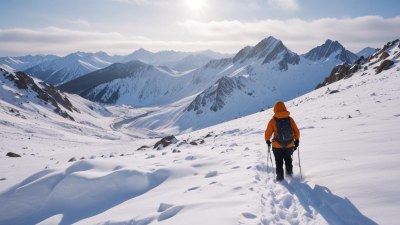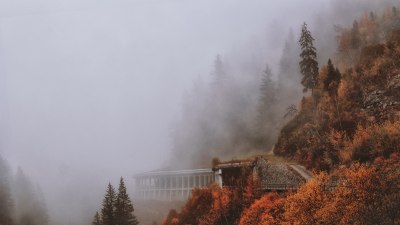How Seasonal Travel Shapes the Way You See New Places
Explore the transformative impact of seasonal travel on your perspective of destinations.

Seasonal travel has an undeniable influence on how we perceive and experience new places. Each season brings its own unique characteristics, colors, festivals, and activities, shaping our interactions with various destinations. From winter wonderlands to summer escapades, the context provided by the seasons can enhance the beauty or charm of a location, making it essential for travelers to consider the time of year when planning their trips. In this article, we will explore how seasonal travel not only alters the physical landscape but also affects our emotional and psychological experiences while visiting these locales.
Understanding Seasonal Travel
Seasonal travel refers to the practice of visiting destinations at specific times of the year, often chosen for their seasonal activities or attractions. For example, some people flock to the mountains during winter for skiing, while others visit the beach during the summer months for sunbathing and swimming. Each season offers different experiences, which can result in vastly different impressions of the same destination. This pattern of travel can be influenced by weather patterns, cultural festivals, and local events that are unique to that time of year.
The Beauty of Winter Travel
Winter offers a magical transformation for many destinations. Snow-covered landscapes create picturesque scenes that often seem to come from a storybook. In cities like Vienna or Budapest, holiday markets spring to life, illuminating the streets with lights, aromas of mulled wine, and various festive goods. Winter travel can evoke feelings of nostalgia, warmth, and even romance. Activities such as ice skating, skiing, or visiting nature reserves can offer unique experiences that are only available during this cold season. Experiencing a location in winter can reveal a layer of tranquility and beauty that may be absent during bustling summer months.
Spring Awakenings
As winter transitions to spring, the world undergoes a dramatic change. Flowers bloom, trees regain their leaves, and wildlife becomes more active. This reawakening of nature can profoundly affect our mood and perceptions of a place. Spring travel offers the opportunity to witness vibrant festivals celebrating life and renewal, such as cherry blossom season in Japan or tulip festivals in the Netherlands. Travelers often experience a sense of rejuvenation and hope during spring, as the warmer temperatures encourage outdoor activities and exploration. This season allows visitors to engage with the beauty of nature in ways that are not possible during the cold months.
The Vibrance of Summer
Summer is often considered the peak travel season, thanks in part to long days and warmer weather. During this time, destinations become lively hubs of activity and celebration. Beaches are filled with sunbathers, while mountainous areas attract hikers and outdoor enthusiasts. Festivals that showcase local music, food, and culture thrive during the summer months. This abundance of life can lead to a dynamic and immersive experience for travelers. However, visiting popular destinations during peak season also means larger crowds, which can alter one's perception of the enjoyment of a place, especially in more tourist-heavy areas.
Autumn Adventures
Autumn, with its stunning foliage and harvest celebrations, offers a unique perspective on many destinations. The changing colors of leaves provide a breathtaking backdrop for hiking and sightseeing, while autumn festivals celebrate the season’s bounty. Visiting wine country during the harvest season grants travelers the chance to taste the fruits of the year’s labor while enjoying breathtaking landscapes. The crisp air and the sense of change evoke feelings of reflection and gratitude, allowing travelers to connect deeply with their surroundings. Enjoying a hike through a forest during autumn can often feel like stepping into a painting, connecting individuals to the passage of time.
Mismatched Expectations
One interesting aspect of seasonal travel is the concept of mismatched expectations. Traveling to a destination during a different season than what is typically experienced or depicted can lead to surprising realizations about a place. For example, visiting Paris in the rainy season may not provide the postcard-perfect image of the Eiffel Tower surrounded by a cloudless sky, but it can unveil a quieter, more intimate experience with fewer tourists. This can allow for deep exploration of local cafes and hidden gems that may be overlooked during busier times. It also challenges travelers to adapt their plans and discover the beauty of the destination in its less-than-ideal conditions.
Cultural Insights through Seasonal Observation
Each season presents a unique cultural lens through which we can observe and engage with locals. Seasonal festivals, for instance, provide insight into traditions, folklore, and communal practices that are tied to specific times of year. Festivals like Diwali in India, Thanksgiving in the United States, or La Tomatina in Spain reflect the various ways people come together to celebrate what their region has to offer. These cultural insights can foster a greater understanding of the local way of life and encourage empathy towards different customs and traditions, enhancing our overall travel experience.
Personal Growth through Seasonal Travel
In addition to offering unique perspectives and experiences, seasonal travel can also contribute to personal growth. Each season has its own challenges and joys that can push travelers to adapt. For instance, navigating through snow during a winter trip can encourage resilience, while encountering the unpredictable nature of spring weather can promote flexibility. Embracing the essence of each season allows individuals to grow in ways that a static travel routine might not facilitate. Seasonal travel thus presents opportunities for learning about oneself as well as the world around them.
Seasonal travel shapes our perceptions and experiences in significant ways, highlighting the diverse beauty and culture of our planet throughout the year. Whether it’s the tranquility of winter, the vibrance of summer, the rejuvenation of spring, or the reflective nature of autumn, each season offers a unique lens through which to explore the world. By embracing the changes that seasonal travel brings, we not only enrich our own lives but can finally appreciate the world in its many forms. As we plan future adventures, let us remember to consider the season and how it will transform our journey.











